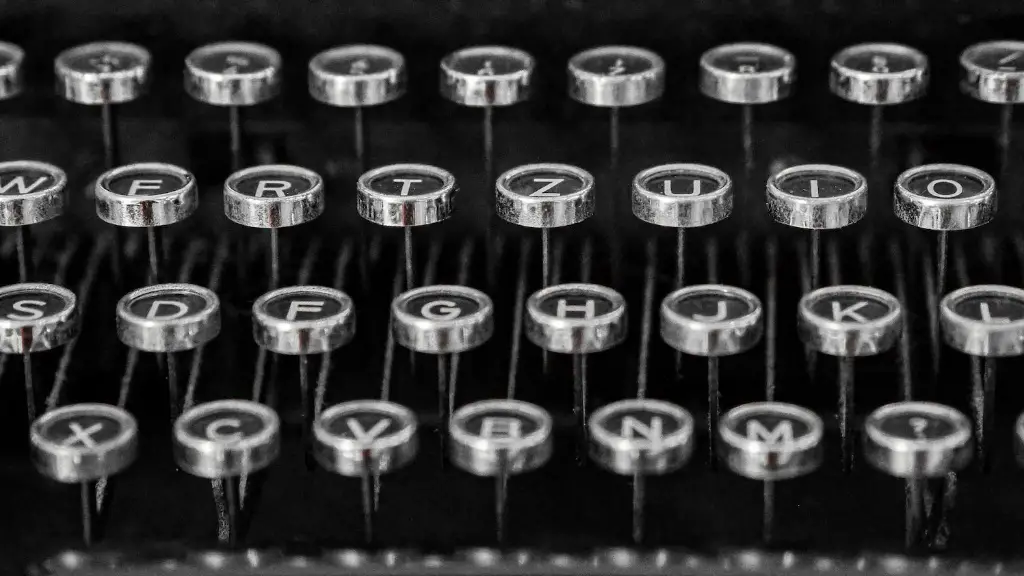Irish Mythology Influences
William Butler Yeats was born in Dublin, Ireland on the 13th of June 1865. He was a poet, playwright and essayist whose work was greatly influenced by his Irish identity. His poetry was heavily rooted in Irish mythology, folklore, traditions and beliefs and he used these elements to express his vision of Ireland and to create a sense of identity and a sense of belonging to his native land.
Yeats was an avid reader, who was especially interested in Irish mythology and folk stories. He was fascinated by the stories of King Art and Queen Maeve, Red Hand of Ulster, the Tuatha De Danann, and many other Irish myths. His poetry was full of allusions to the mythology of his homeland. These allusions gave readers a glimpse into the Irish imagination and the respect it generated for the land. He was also interested in Irish music, and it was often included in his poetry.
He drew inspiration from his country’s mythology and this became a major part of his work. He wrote some of his most iconic works as a comment on the disappearance of the rural Irish culture of his youth. He was passionate about the importance of preserving tradition, and his writings were profoundly influenced by his patriotism and love of his country.
Yeats was also heavily influenced by the political strife in Ireland during his lifetime. The political and cultural upheaval of his era had a deep effect on him and he wrote extensively about the struggles and social unrest in Ireland. Much of his work expressed his frustrations with British rule and the powerlessness of the Irish people in the face of occupying forces. His work was both a reflection of and a call for change in his society.
Irish Symbolism
Yeats also used symbolism in his works to evoke the spirit of the Irish people and their culture. Many of his poems feature symbols from the Irish flag, with green representing the Irish Republican Army, orange representing the Irish Loyalists, and white for the peaceful aims of both groups. He also used symbols from Irish mythology, such as the harp, which symbolizes Irish pride and Emerald Isle, which stands for the emerald green landscape.
Another major symbol that was often used in his writing was the Great Hunger of Ireland, which stands for the consequences of the potato famine in Ireland. His work often highlighted the hardships experienced by the Irish people during this period. He also used nature as a core element of his poetry, often incorporating Irish countryside, rivers, and the sea. This nature symbolism helped to root his work in the Irish landscape and to create a sense of longing for a way of life which had been lost.
Yeats was not just a poetic witness of Irish culture and history but also a provocative voice for it. His writing was an urgent reminder of the strength and resilience of the Irish people and their struggle for survival and dignity. His themes of love, war, struggling, freedom, dreams and sorrow captured the universal themes of the human condition.
Legacy
Yeats poetry created a sense of national pride in the Irish people and helped bring their culture to the attention of the whole world. He was a master of his craft and a creative genius who was able to create powerful imagery through his writing. His works are still widely read and appreciated today, and his Irish identity and the cultural influences that shaped it are an integral part of his poetic legacy.
Irish Politics
Throughout his career, Yeats was an advocate for a free, united Ireland. He was a member of the Irish Literary Revival, a group of poets and writers who sought to revive Irish culture and language by exploring its myths and traditions. He was a passionate believer in Irish independence and was deeply concerned with the political strife in his homeland.Yeats believed that Ireland needed to find her own identity and distance herself from the politics of England and the framework of the British Empire. His works were filled with political and emotional outbursts as he sought to transform Irish society with his writing.
He was a staunch supporter of the Irish Free State movement and joined the Irish Party founded by Charles Stewart Parnell. Yeats was a firm believer that Ireland’s struggle was part of a larger effort for liberation and autonomy for all of Europe and he regularly aligned himself with like-minded individuals to demand freedom and justice for the Irish people.
Irish Language
Yeats was an advocate for the Irish language and believed that it was integral to the Irish identity and culture. He was a firm believer that English was being imposed on the Irish people and he hoped to change this perception by writing in Irish. He wrote articles and essays on the importance of the Irish language and wrote numerous poems in Irish. He also wrote a collection of poems entitled “Gleanings in Irish Language” that were published in 1907 and are still widely read today. He was a pioneer of Irish language poetry and is credited with helping to bring the language back into popular culture.
Yeats’ passion for the Irish language and his embrace of the Irish mythology helped to create a sense of national pride among the Irish people during a troubled time. His works were an integral part of the Irish Literary Revival and he was an inspirational figure for future generations of Irish writers and poets.
Social Consciousness
Yeats was a fiercely independent thinker and was committed to creating a larger awareness among his people of the need for social change. In 1898 he became a member of the newly formed Irish Literary Theatre and wrote numerous plays to address the issues of his society. His works often portrayed characters who were marginalized and powerless in the face of authority and oppression.
Yeats saw the need for a reform of the Irish education system and was an active member of the Irish Language Society and the Irish National Teachers’ Organisation. He was an outspoken advocate for better education for the Irish people and for the revival of Irish culture and mythology in the schools. He hoped that this would foster a sense of national pride and a deeper understanding of their Irish heritage.
Conclusion
Yeats’ Irish identity was an essential part of his life and his work was an homage to his native land and to the Irish people and culture that he loved so deeply. His poetry was infused with imagery from Irish mythology, folklore, and tradition and served as a call to arms for a nation in turmoil, a reminder of the courage and resilience of the people it served. Today, his works are still widely read and are a testament to the power of language and to the spirit of a poet and patriot whose words still echo in the land he called home.

